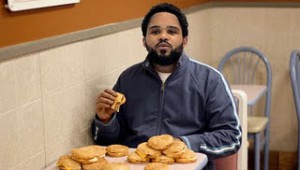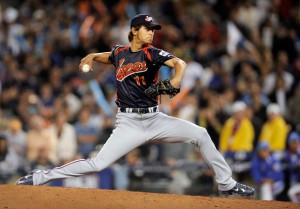This is your semi-weekly/periodic wrap-up of Nats and other baseball news that caught my eye. I try to publish this about weekly or if it gets up to about 1500 words, so that it’s not to voluminous.
Nationals In General
- Nats continue to talk about a contract extension with Ryan Zimmerman, according to this and other sources. I’m not arguing against re-signing him; in fact he’ll be at a discount by virtue of missing so much time last season and being relatively injury-ridden as of late. The question is whether Zimmerman’s camp would accept anything less than what Troy Tulowitzki got (10/$157M) or Ryan Braun (13/$150M between current and extension contracts) signed. Here’s a case against re-signing him (though to be fair, the same blog posted a “case-for” earlier). Lastly on the topic; this fangraphs.com article looking for a good comparable for Zimmerman based on his production and value (the answer? Matt Kemp‘s 8yr/$160M deal).
- Nats miss out on Prince Fielder, as he signs a 9yr, $214M deal with Detroit. Quick hit thoughts: Thank god there’s no more rumors about Fielder to the Nats. I wanted him and his bat, but not at that price and for that length. The team dodges an albatross of a contract in a few years time. Lastly; how in the world is Detroit going to manage that payroll? Its not as if that city is an up-and-coming, wealthy place. Makes you wonder just how well-off these baseball owners really are.
- I guess FA rumors are just meant to be with this team; suddenly we’re in the Roy Oswalt mix. Now, I’ve said in the past that I like this guy and think he’d be a great fit for the team … but that was before we traded the farm for Gio Gonzalez and offered arbitration to John Lannan. I’ll ask a simple question; if we sign Oswalt, who makes way? Last time i checked this team has 5 starters, each signed for 2012 and each with a multi-million dollar commitment. So this rumor doesn’t make any sense any longer. Oswalt makes a ton more sense for a team like Texas or Boston, as is noted in the many columns on the subject posted recently.
- LOVE the Brad Lidge acquisition. The team needed a middle relief replacement for Todd Coffey and just got one, and for almost no money ($1M base with incentives). He’s struggled with his health, but when he has been healthy he’s been lights out for the last two seasons (not to mention the rest of his career). He can close in a pinch, he can help offload high-leverage innings off of Tyler Clippard. And he can mentor the bullpen guys. Fantastic signing by Mike Rizzo.
- Nats will play Georgetown U in an exhibition for the 2nd year running. Knowing how weak Georgetown’s program is, I wonder just how badly the scoreline will look (last year’s score was 15-0).
- MLB daily dish is attempting to replicate the Big Board and throw in contract details at this site here. We’ll see how uptodate this site is kept during the turbulent season of player movement in the minors.
Free Agents/Player Transaction News
- Jamie Moyer signs a minor league deal with Colorado. He sits at 267 wins for his career, so the chances of him getting to 300 are relatively slim, but his chances of making Colorado’s rotation aren’t too bad. Roto World lists their depth chart right now at Chacin, Hammel, Pomeranz, White and Moscoso. Lots of youth there; White and Pomeranz are both 22-23 and were both relatively awful last year. De La Rosa is coming off injury but may not be ready for opening day. He very well could feature for this team in 2012.
General Baseball News
- Yes I know these “top 5 lists” are mostly national columnists fulfilling writing requirements during the slow January baseball news period, but if the Nats are listed, i’ll post it. David Schoenfield lists his “Top 5 rotations” in the game and he goes Philly, Angels, Texas, New York and Arizona. I gotta say; i think he’s vastly overrating the Yankees rotation and I think he’s overrating the Arizona crew as well. Arizona’s pitchers were more or less awful in last year’s NLDS; not sure I’d count on them in a pinch. I’d easily put Tampa Bay and San Francisco’s rotations above these two teams, not to mention the possibility of Atlanta’s group gelling and helping that team win 95 games.
- Marlins apparently ready to sign up for Showtime’s the Franchise, which featured San Francisco last year and was Showtime’s answer to HBO’s Hard Knocks football weekly documentary. The show was great in 2011, showing the human side of many of the Giants players and was a must-watch in my house. Of course, showing Miami could be an interesting endeavor; most of the baseball industry speaks badly about Miami’s ownership and senior management group and these documentary shows usually go to great lengths to humanize and gain empathy for all the participants.
- Jose Bautista claims to have been “random drug tested” 16 times in the past two years, despite any single player’s chances of being randomly tested only being about 3 times in two years (according to the number of tests MLB is authorized to run versus the number of pro players). As is noted in the link, it looks to me like MLB is taking no more chances with its big home-run hitters.
Collegiate/Prospect News
- First College top 25 posted by Baseball America (more discussion on each team here), and there’s no surprise who’s #1: Florida by virtue of its absolutely stacked lineup (two first team and two 2nd team pre-season all americans by this publication). No surprise Stanford is #2 behind their presumptive 2012 #1 overall pick Mark Appel, but surprised that Texas and Texas A&M are so low. I think by the time the CWS rolls around we’ll be seeing these teams, plus South Carolina back in the mix behind their returning friday and saturday starters.
- The great Kevin Goldstein unveils his top 20 Nationals prospects on Baseball Prospectus. We all know who went the other way in the Gio Gonzalez trade; what’s more interesting is who now resides in places 16-20. Clearly he has to struggle to find “prospects” worthy of ranking there, based on his inclusion of Jason Martinson, Matt Skole, Sandy Leon, and David Freitas. Otherwise the top 12 or so reads as expected.
- MLB’s Jonathan Mayo announces their top 100 for the whole game. Bryce Harper #2 behind Matt Moore; no argument there. Surprised Mike Trout didn’t get more credit. Most scouting pundits consider the big 4 (to include Atlanta’s Julio Teheran) as almost interchangeable. The rest of the top 10 are well known; I’d never heard of #7 Jurickson Profar, a shortstop in Texas’ organization who is really young but really promising. Other thoughts: surprised to see Danny Hultzen so high; I know he was dominant in college but is he slated to be that dominant in the pros? Other Nats/ex-Nats on the list: Anthony Rendon at #27, Brad Peacock at #75, Alex Meyer at #83, Sammy Solis at #86, AJ Cole at #88. No mention of Matthew Purke, but no surprise; he needs to have a healthy, strong season to regain his former 1-1 status.
- My alma-mater JMU is #1 pre-season CAA baseball.
General News; other
- Those of you who know me may know that i’m also a pretty passionate Soccer fan. So here’s a fantastic look at the history of soccer through an “All-time fantasy soccer player draft.” The first round was rather surprising; I know Lionel Messi is a great player now, but he’s got a bit of work before he supplants Pele, Maradona, Ronaldo or even Zidane in my book. Of course, he’s already a 3-time world player of the year at the tender age of 24, so by the time he retires he may very well have 3 more awards. Still, the selections (especially from the non-US based journalists who have a better sense of soccer’s history) are a great read.
- Speaking of soccer, here’s a Grantland article on the conventional wisdom among most American fans that Soccer is boring. I’ve tired of trying to argue this point with people who have never actually SEEN a live soccer game. I have a good friend, born and bred in Pittsburgh and who is a die hard Steeler’s fan (in other words, the complete anti-thesis of a typical soccer fan) who I drug to a US Men’s national team game at RFK about 15 years ago. He fell in love and now follows the european game with similar gusto as I. I think American sports fans are too impatient, and have been even before the rise of cell-phones, the red-zone channel and highlight shows, to appreciate the beauty of Soccer. They devolve the game, without really having any personal experience watching a big match or seeing one in person, into the common phrase, “how exciting can a 1-0 game be?” I’d say to that; imagine a professional football game where there was no field goals allowed, the end zone was only 24 feet wide and there was a player positioned at that end zone at all times whose sole job it was to stop break away runs and passes. Its simply that much tougher to score. So most soccer fans know that the excitement of the game is the tactics, the breakdown of individual skill of the attacker versus the individual skill of the goalkeeper, and the near miss.









